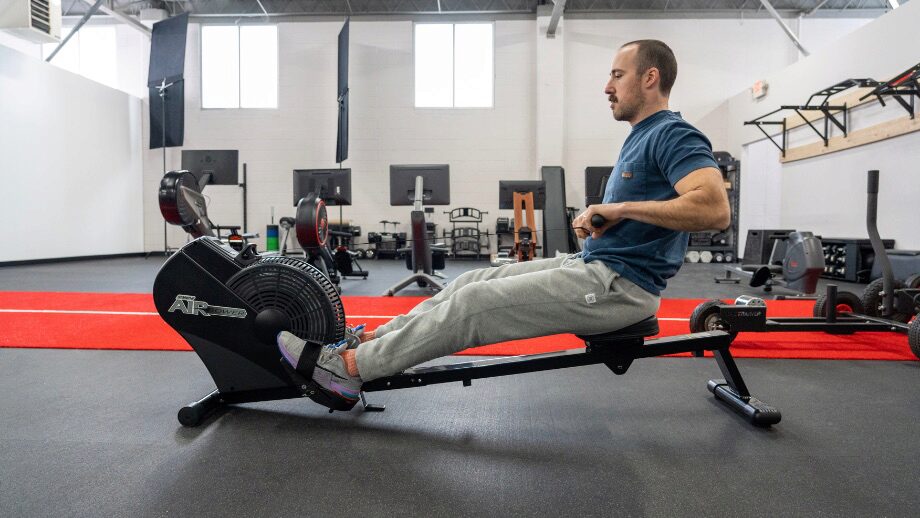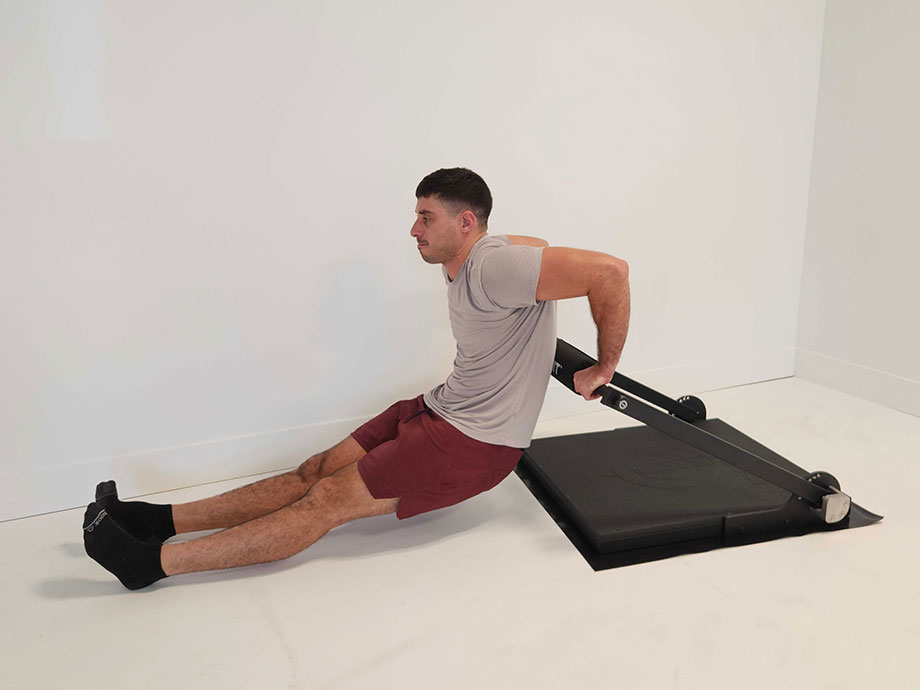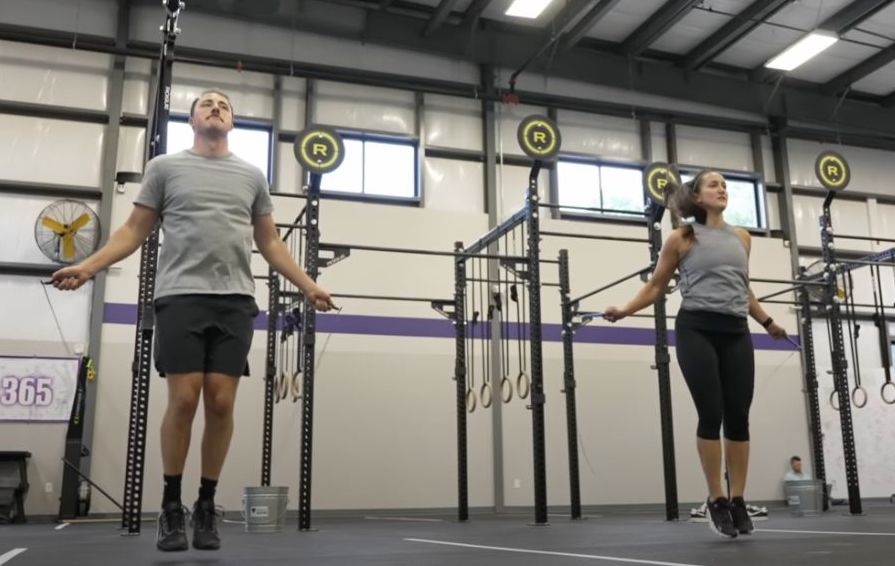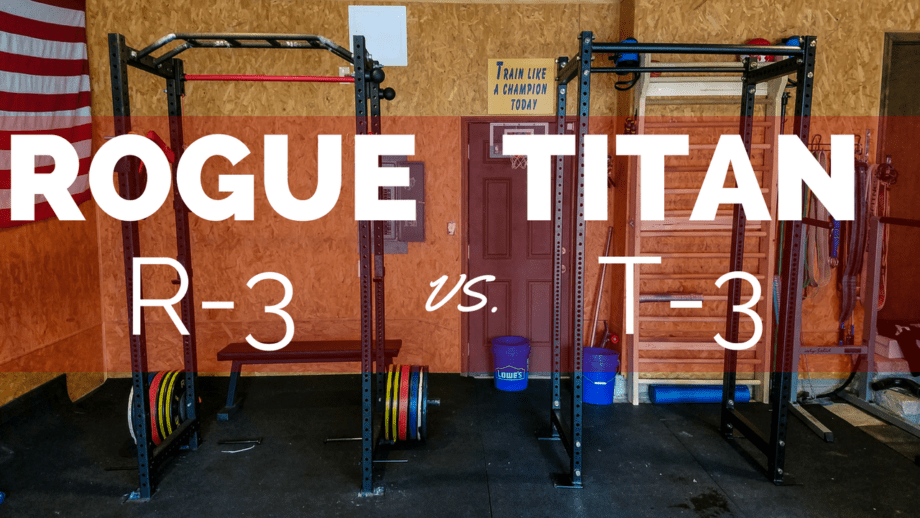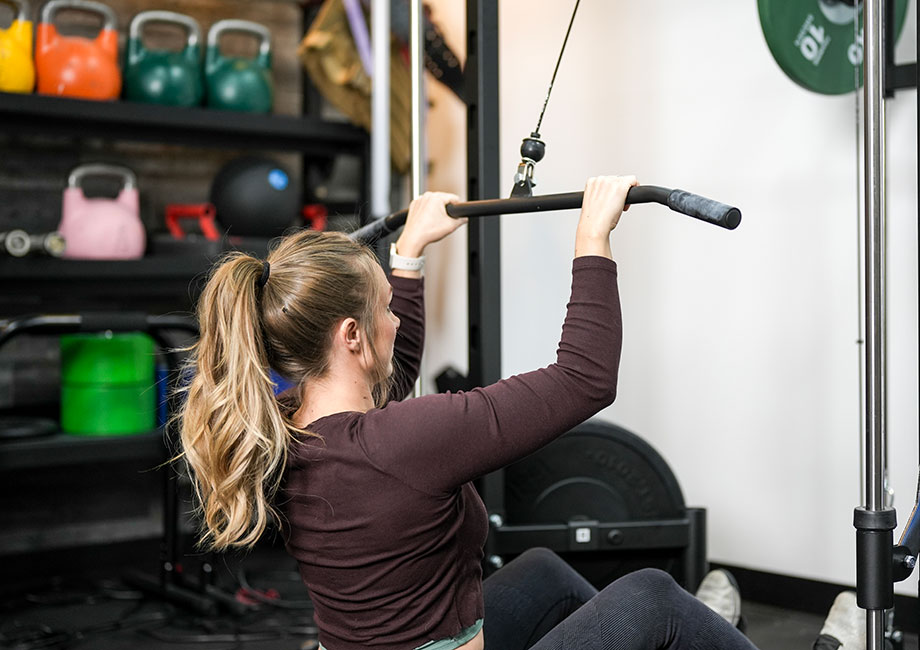These workouts are beginner-friendly and can be adapted for any fitness level as you practice and progress.
So you’re new to rowing machines? Maybe you’re not sure where to start. That’s okay, this guide will help you devise a plan to start using your rower (sometimes called an erg) into your home workouts. The more comfortable you get with your rowing machine and the better your rowing technique gets, the more advanced you design your workouts.
However, the purpose of this guide is to help advise the beginner rower how to get started without too much overthinking. As far as cardio equipment goes, the rower isn’t always the top cardio choice for a beginner. Walking or jogging on the treadmill is pretty intuitive compared to rowing, which has a slight learning curve. The good news is that it won’t take long to learn how to use an erg and benefit from low-impact, full-body rowing workouts for beginners—all while elevating the heart rate and up and getting your recommended dose of cardiovascular exercise.
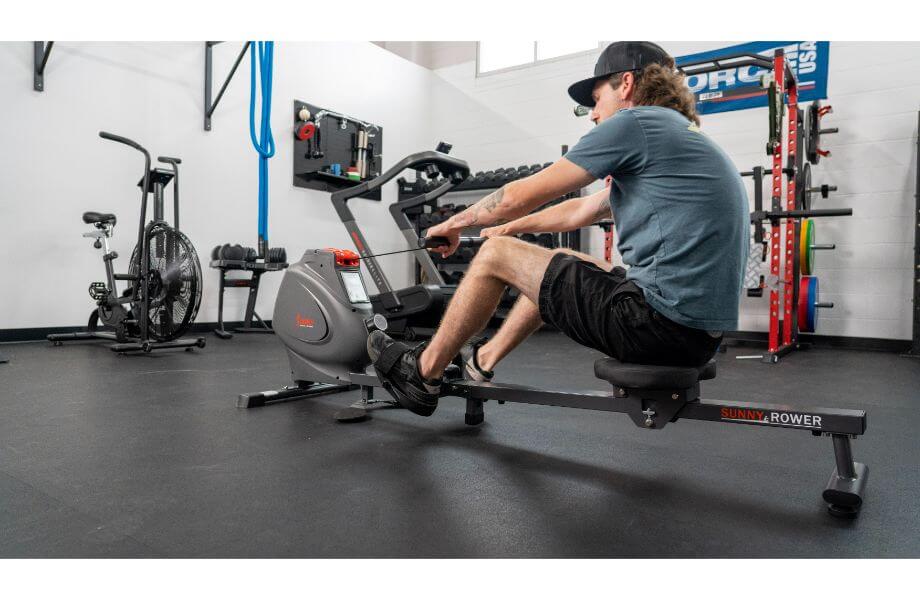
Medical disclaimer: This article is for information and educational purposes only, and is not intended as a substitute for health or medical advice. For such advice, contact an appropriate and licensed healthcare professional.
How to Track a Rowing Workout
There are a few things to know about measuring and monitoring your workout that are distinctly different than how you might on treadmills, ellipticals, and exercise bikes. Although you will see common things like elapsed time displayed on the monitor, you will also notice that ergs measure workouts in meters, not miles.
Additionally, your rower will have a stroke rate, which is basically the rate at which you can perform a full pull on the cable. Rowing consoles also show a split time, which indicates how fast you can row 500 meters at your current pace (similar to a runner’s mile time).
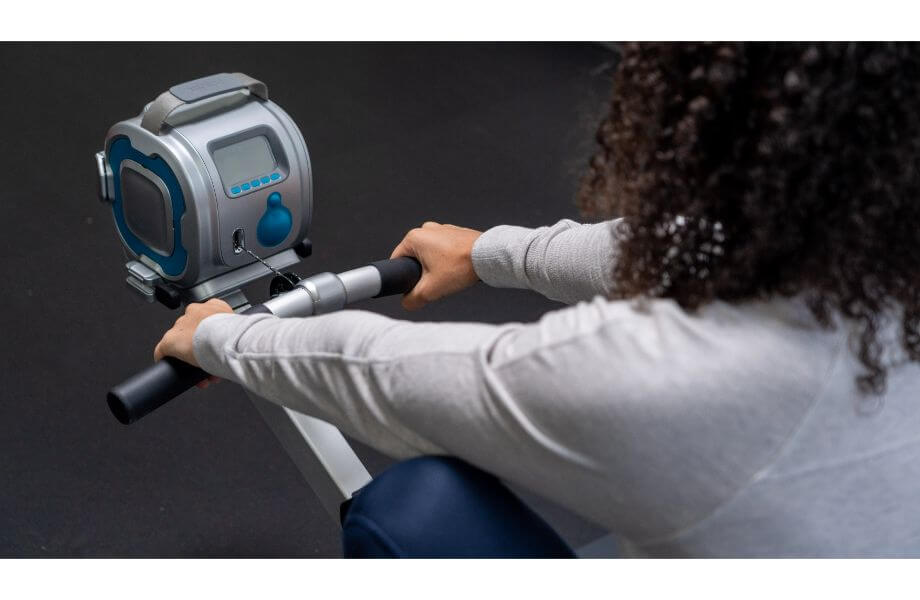
Lastly, watts is another unique method of tracking. A watt is a unit of power, which means that the rowing machine quantifies your power output. This measure of power is where the rower gets its nickname of erg, short for ergometer (a device that measures energy or power expenditure).
For the purpose of this guide catering to the true rowing beginner, these workouts will only focus on tracking your elapsed time, stroke rate, and effort.
What is a Stroke Rate?
The stroke rate is how many full repetitions you take on a rowing machine per minute. A full repetition is going through the catch, drive, finish, and recovery.
In other words, a full rep is when you’ve gone through a full extension on your legs, leaned back, completed the pull, and reversed the order to lean forward, straighten the arms, and bend at the knees and hips to send you back in your starting position.
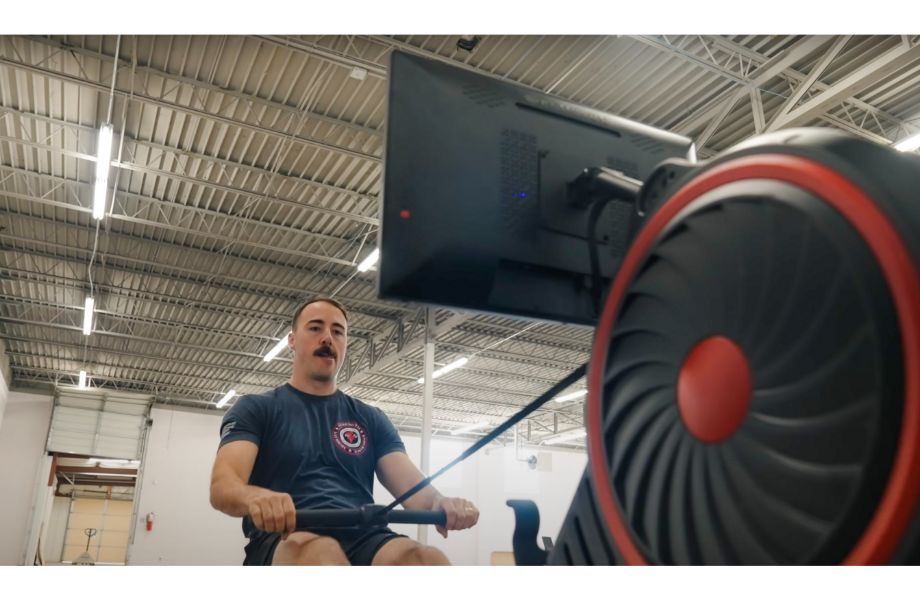
The guide below can help you navigate what different stroke rates might feel like. These might not be completely accurate for a beginner rower, so take the table below merely as a guide.
One good rule of thumb personal trainers use is the “talk test,” where a coach determines a client’s output by their ability to hold a conversation.
If you can hold a pretty normal conversation without the need for taking a few breaths between words, you’re probably working at less than 55% effort. YThe faster you row, the more difficult it will become to speak. Conversations out loud will be extremely difficult when doing anything above 80% effort.
| Stroke Rate (SPM) | Effort |
| 14-16 | 40-50% effort. Easy warm-up pace; just getting things moving. |
| 16-18 | 50-55% effort. Light, easy effort; ability to keep good rhythm. |
| 18-20 | 60-65% effort. Harder, but still have the ability to keep a steady pace and speak. |
| 20-24 | 70-75% effort. Working harder; heart rate is up; breathing shortens to a quicker pace. |
| 24-26 | 80-85% effort. Hard but manageable; heavier breathing; may be harder to just perform nasal breathing. |
| 28-30 | 90-95% effort. Workout is becoming difficult; heavy breathing taking place; hard to speak. |
How To Row On Your Machine
Before you keep reading to find out the details on beginner workouts, make sure you feel comfortable navigating your rowing machine.
Use the owner’s manual to make sure you know how to read the monitor on the console. It’s also a good idea to take a minute to test the strapping system to secure your feet into the foot plates.
After getting to know your machine, take a moment to practice good rowing form and distinguish between the four different stages of the row: the catch, drive, finish, recovery.

HIIT Rowing Workout for Beginners
High-intensity interval training (HIIT) on a rower can be tough because both the upper and lower body are taxed.
Although the workout below looks short and sweet, the idea is to perform multiple rounds. For your first workout, aim to get through two or three rounds. With more practice, work up to five rounds for a 15-minute HIIT workout.
Note that the rest period doesn’t include the row movement, but rather just the leg drive through full extension. Excluding the rowing motion on the rest period is one way to help the limited 30-second recovery phase.
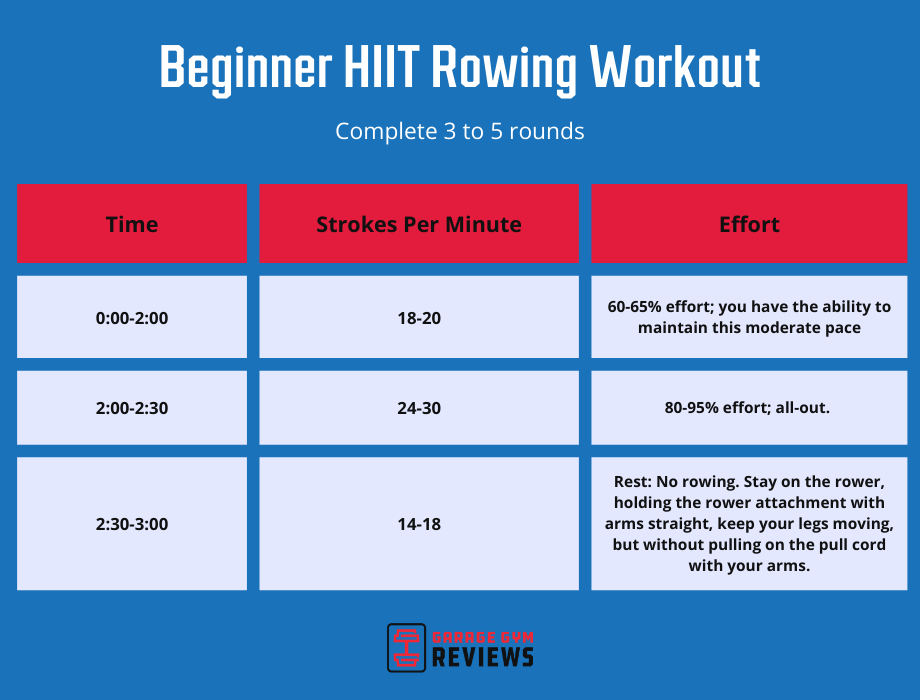
| Time | SPM | Effort |
| 0:00-2:00 | 18-20 | 60-65% effort; you have the ability to maintain this moderate pace |
| 2:00-2:30 | 24-30 | 80-95% effort; all-out |
| 2:30-3:00 | 14-18 | Rest: No rowing. Stay on the rower, holding the rower attachment with arms straight, keep your legs moving, but without pulling on the pull cord with your arms. |
Endurance Rowing Workout for Beginners
An endurance workout is all about extending your time performing cardiovascular exercise. For this reason, your exertion and stroke rate will be lower than an interval workout, so you can perform at a pace you can maintain for longer durations.
This type of workout keeps you at a steady state that you can maintain for the bulk of the workout. You can always extend the working phase longer than 15 minutes once you feel comfortable and can maintain good technique throughout the entire rowing session.
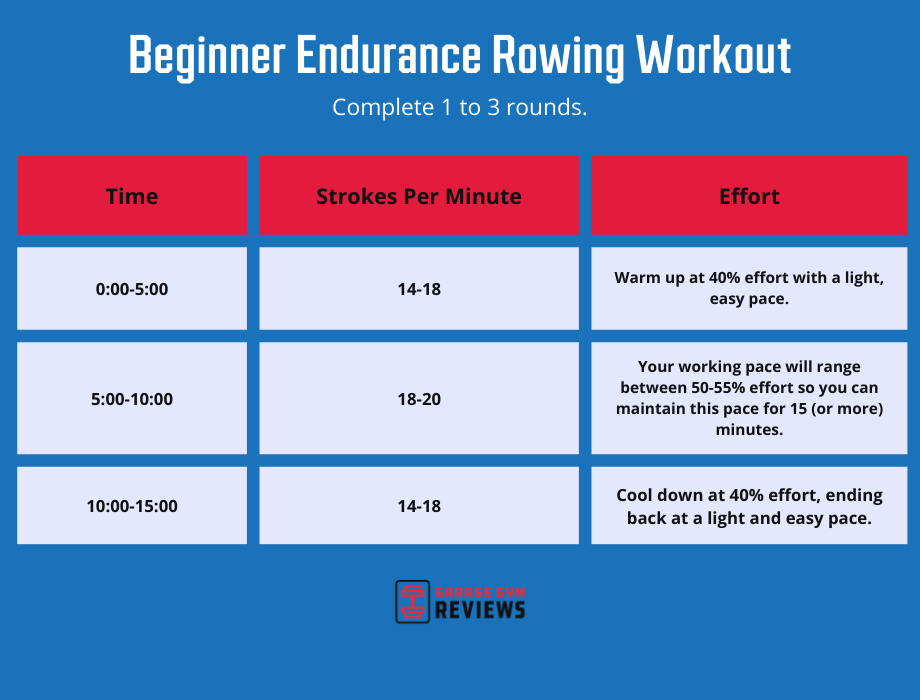
| Time | SPM | Effort |
| 0:00-5:00 | 14-18 | Warm up at 40% effort with a light, easy pace. |
| 5:00-15:00 | 18-20 | Your working pace will range between 50-55% effort so you can maintain this pace for 15 (or more) minutes. |
| 15:00-20:00 | 14-18 | Cool down at 40% effort, ending back at a light and easy pace. |
15-Minute Rowing Workout for Beginners
For this 15-minute rowing workout, you will cycle through intervals, but not quite in the same way you would for HIIT workouts.
After you perform a 5-minute warm-up at an easy pace, your workout will then go into a 30-second bout of higher intensity, followed by 60 seconds of moderate intensity. The 30-second segments will intensify from 60% to 70% to 80% and then back down again for a pyramid style workout.
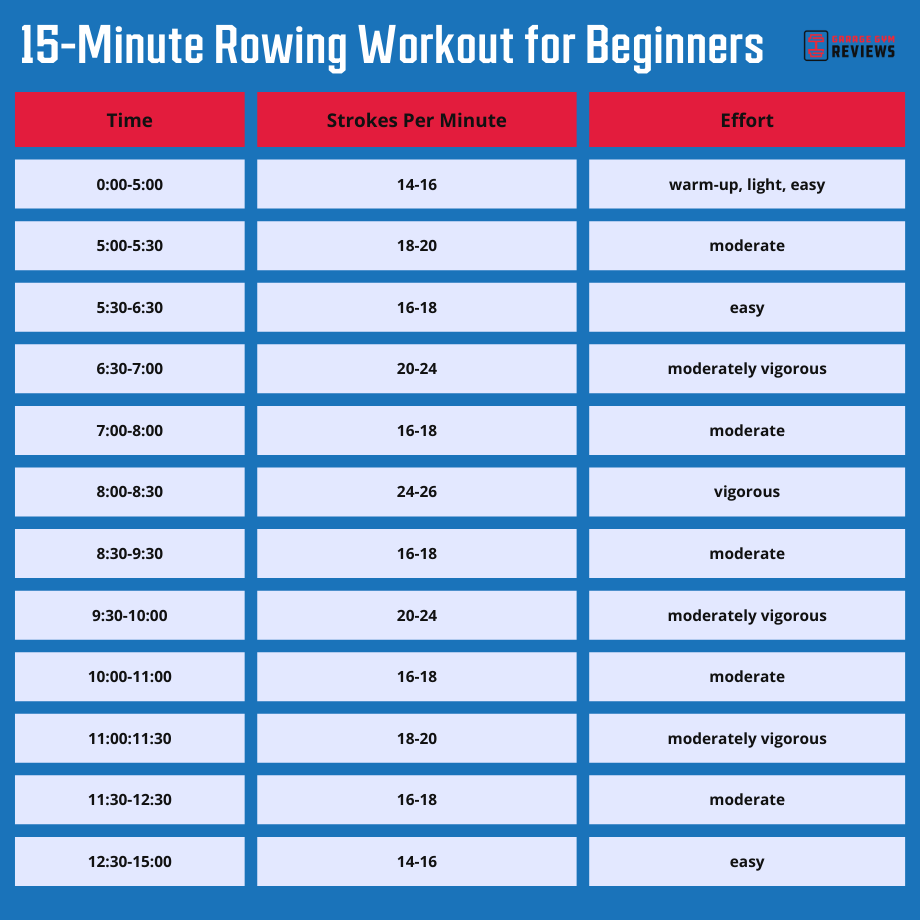
| Time | SPM | Effort |
| 0:00-5:00 | 14-16 | 40% effort; warm-up, light, easy pace. |
| 5:00-5:30 | 18-20 | 60-65% effort; pick up the pace from your warmup without going all out. |
| 5:30-6:30 | 16-18 | 50% for 60 seconds |
| 6:30-7:00 | 20-24 | 70-75% effort; hard but not quite an all-out effort, still manageable to maintain the pace for 30 seconds. |
| 7:00-8:00 | 16-18 | 50% for 60 seconds |
| 8:00-8:30 | 24-26 | 80-85% effort; hard but manageable, breathing is heavy, this will be faster than your last bout of speed. |
| 8:30-9:30 | 16-18 | 50% for 60 seconds |
| 9:30-10:00 | 20-24 | 70-75% effort; hard but not quite all-out effort. |
| 10:00-11:00 | 16-18 | 50% for 60 seconds |
| 11:00:11:30 | 18-20 | 60-65% effort; still able to keep this steady pace. |
| 11:30-12:30 | 16-18 | For one full minute, bring it down to 50% effort. |
| 12:30-15:00 | 14-16 | Cool down at 40% effort with a light, easy pace. |
35-Minute Rowing Workout for Beginners
You’ll start this workout at an easy pace for the first five minutes, work up to a moderate pace for the next five minutes, and then work into a moderate-to-vigorous pace for the next five minutes. The cycle repeats once more, finishing with a five minute cool down, totaling 35 minutes in all.
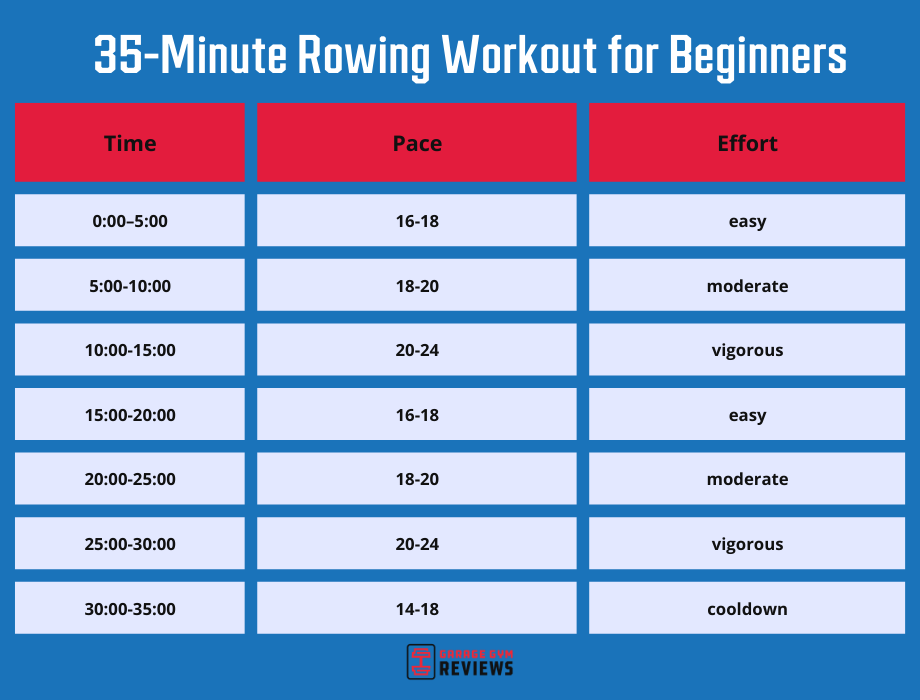
| Time | SPM | Effort |
| 0:00-5:00 | 16-18 | 50-55% easy |
| 5:00-10:00 | 18-20 | 60-65% moderate |
| 10:00-15:00 | 20-24 | 70-75% moderate-to-vigorous |
| 15:00-20:00 | 16-18 | 50-55% easy |
| 20:00-25:00 | 18-20 | 60-65% moderate |
| 25:00-30:00 | 20-24 | 70-75% moderate-to-vigorous |
| 30:00-35:00 | 14-18 | Cool down at 40% |
Benefits of Rowing Workouts
Indoor rowers are a great way to supplement your at-home strength training routine in addition to meeting the recommended 150 minutes of cardiovascular exercise per week. Using an erg can offer a low-impact workout that stimulates multiple muscle groups.
When your body engages multiple groups of muscles at once, it creates a greater stimulus than isolation movements, which leads to greater overall caloric expenditure.
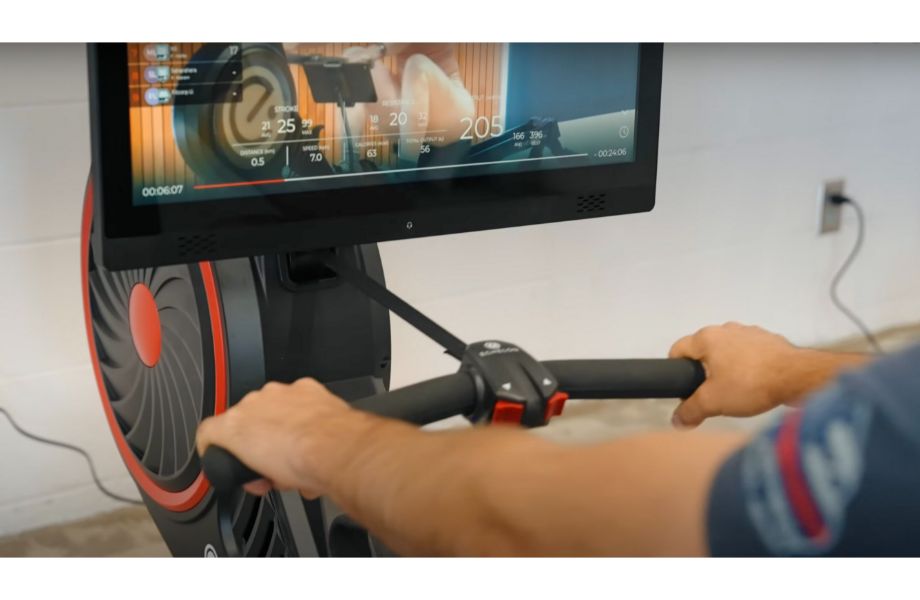
When the rowing workouts get hard, you’ll get that heavy leg feeling you might get from a tough, high-volume set of squats or lunges.
Not only will your legs be helping to drive you into full extension, your upper body is behind the pulling motion—using the back muscles and deltoids to pull the rowing handle toward your body. Your core is also working by stabilizing the trunk and ensuring good posture from one stroke to the next.
FAQs About Rowing Machine Workouts
What is the best rowing machine for beginners?
The best rowing machine for your home gym is one you can afford, one that fits in your space, and is one you actually want to use. Coop and the GGR team unanimously put the Concept 2 Model D Rower at the top of the list. The Concept 2 will run you $1,000, but if you have the budget, this option will not fail you—it is a low-maintenance machine, features a super solid build, and has an easy-to-read monitor.
The Concept 2 is basically the gold standard for indoor rowing machines on the market. However, you will have ergs that are priced well over $1,000 (like the Hydrow Connected Rower) and some that sit well below that mark (like the Sunny Health and Fitness Rowing Machine). A good rule of thumb is to purchase the best-quality piece of equipment that you can afford.
How long should I stay on the rowing machine?
For beginners, it’s a good idea to work up to longer cardio sessions, after practicing good form for shorter durations. The American Heart Association recommends adults get 30 minutes of moderate-to-vigorous activity at least five day a week. This doesn’t mean all of your exercise has to be performed on a rower, but it can help chip away at the 150 minutes of total cardiovascular exercise recommended every week.
Is rowing a good workout?
Yes! Rowing works the muscles of your legs, core, shoulders, and back. However, indoor rowing is mainly used as a method of cardiovascular exercise. Regular cardio can decrease your risk of heart disease (like diabetes and stroke) because it acclimates your heart to be more efficient at pumping blood to the whole body in addition to stimulating the lungs and circulatory system.
What does rowing do for the body?
A rowing machine is a unique full-body workout that is also low-impact for your joints compared to running or walking. During the leg drive sequence, your legs work to push you away from the resistance, working your quads, hamstrings, and even the glutes. During the catch your upper body is engaged to pull the rower handle inward, working the delts.
RELATED: Rowing vs Running
What is good rowing technique?
In addition to maintaining good posture with your head up, shoulders pulled down away from your ears, and a neutral spine—you’ll also want to remember the four different stages of the row: the catch, drive, finish, recovery.
Everyone responds to coaching cues a little differently, and Amanda Capritto, GGR editor and personal trainer, understands that. Amanda prefers to coach the rowing machine with these four categories: legs, lean, pull, reverse. The movement pattern hasn’t changed, only the explanation. Here’s a quick run through:
Legs: Drive through a flat foot and fully extend the legs.
Lean: As legs extend, lean back slightly (just past 90 degrees)
Pull: Right before you lean past the 90 degree angle, pull with your arms and back muscles.
Reverse: Bring it back to the starting position in reverse order by extending arms, leaning torso forward, and bending through knees and hips.


